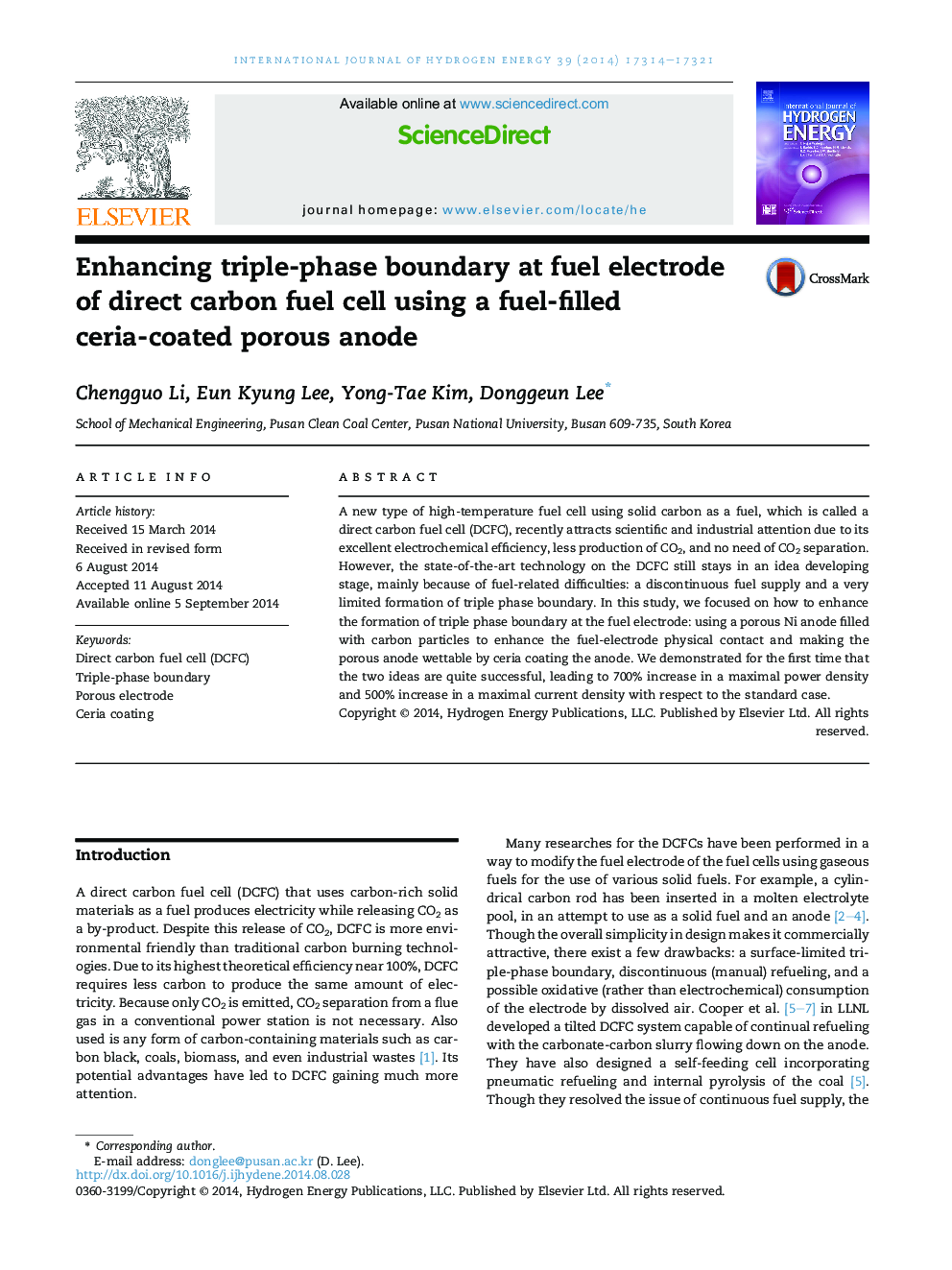| Article ID | Journal | Published Year | Pages | File Type |
|---|---|---|---|---|
| 1272187 | International Journal of Hydrogen Energy | 2014 | 8 Pages |
•Triple-phase boundary at fuel electrode of DCFC can be significantly improved.•Solid fuel-filled ceria-coated porous anode was so effective to realize 7-fold increase in power density.•Ceria coating mainly makes Ni anode wettable and thereby enhance the system performance.•Ceria does not likely react with Ni supports at least in the current operation condition of DCFC.•There exists an optimal coating of ceria; too much coating degrades its performance.
A new type of high-temperature fuel cell using solid carbon as a fuel, which is called a direct carbon fuel cell (DCFC), recently attracts scientific and industrial attention due to its excellent electrochemical efficiency, less production of CO2, and no need of CO2 separation. However, the state-of-the-art technology on the DCFC still stays in an idea developing stage, mainly because of fuel-related difficulties: a discontinuous fuel supply and a very limited formation of triple phase boundary. In this study, we focused on how to enhance the formation of triple phase boundary at the fuel electrode: using a porous Ni anode filled with carbon particles to enhance the fuel-electrode physical contact and making the porous anode wettable by ceria coating the anode. We demonstrated for the first time that the two ideas are quite successful, leading to 700% increase in a maximal power density and 500% increase in a maximal current density with respect to the standard case.
